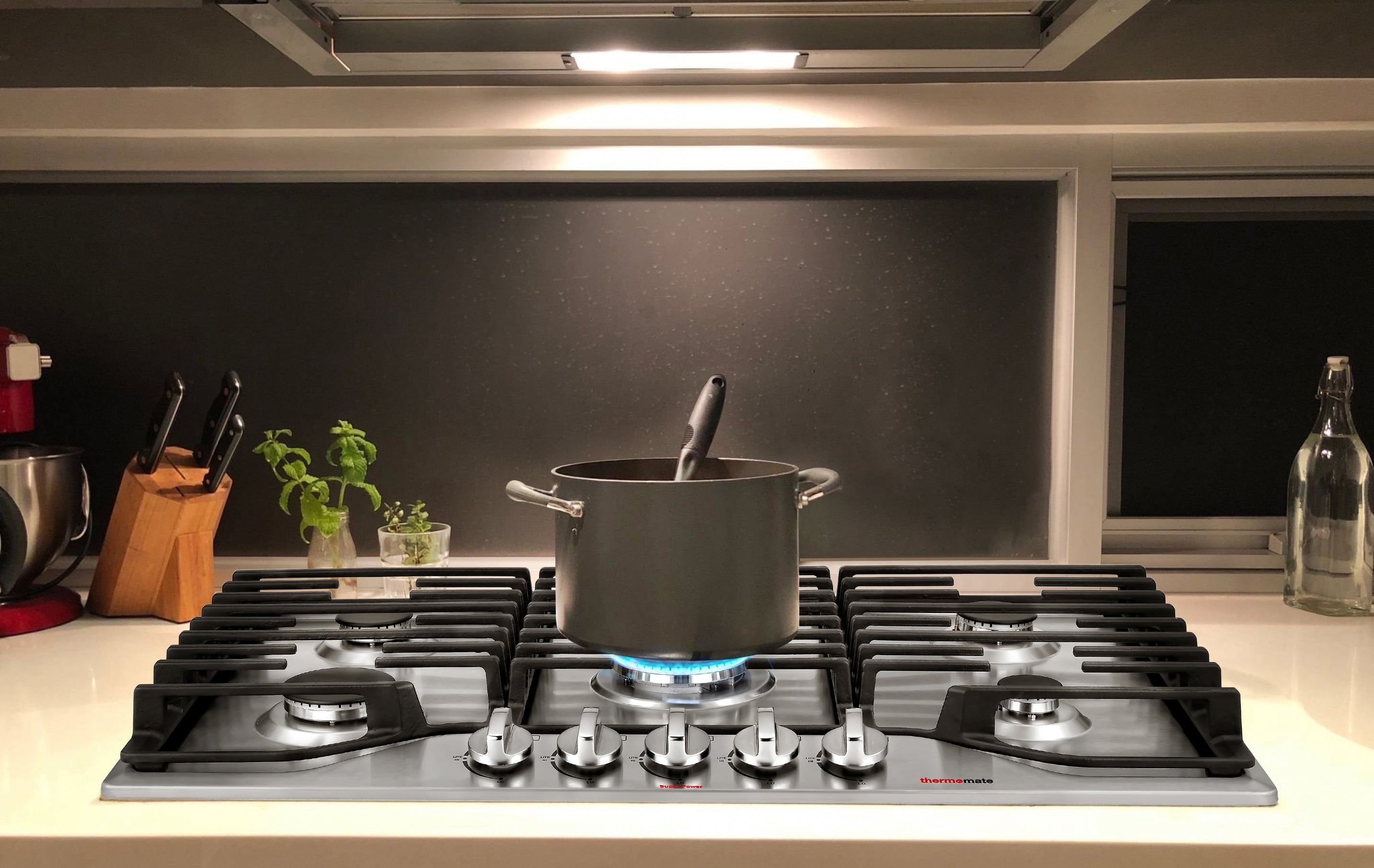How to Clean a Gas Cooktop
Chances are, your cooktop needs a good, solid cleaning after a big family gathering or holiday meal. Plus, it’s sort of like making your bed everyday: If your cooktop is clean, your whole kitchen looks clean! But don’t wait until it’s so bad that you need to spend hours degreasing and scrubbing it. “A quick wipe is much easier than waiting until you need to deep clean.
Keeping your cooktop clean also helps it last longer, and who doesn’t want that? It’s also a matter of safety and efficient cooking. Dirty burners that don’t allow gas to flow freely can be a hazard. The flame should be blue; a yellow flame means incomplete combustion, which could mean the little holes in the side of the burner are clogged.
How Often Should I Clean My Gas Cooktop?
A daily light cleaning can go a long way—it’ll stave off the need for deep cleaning and make the job easier when you choose to do it.
After a day’s use, give your gas cooktop a quick wipe-down with an all-purpose cleaner, and remove any stray food or splatters with a damp cloth. If you routinely perform this easy task, you’ll save yourself a lot of elbow grease down the road.
A gas cooktop (as opposed to an electric one) typically features four parts that will need to be cleaned:
- Grates: The raised, removable parts that the cookware sits on
- Burner caps: The removable round disks that sit directly over the flame to help distribute it evenly
- Burner heads: The metal pieces found under the burner caps
- Cooktop surface: The area that covers everything else
Steps for Cleaning a Gas Cooktop

Make sure all the parts of your cooktop are turned off and cool to the touch before starting to clean. Here are the steps for performing the task.
Step 1: Remove the grates and caps
- Remove the grates and burner caps and place them in your kitchen sink.
- To soften any caked-on gunk, fill the sink with warm, soapy water and let the cooktopcomponents soak for at least fifteen minutes.
- Drain the water from the sink.
Step 2: Make a cleaning paste
- To make a cleaning paste, combine 1 part vinegar, two parts baking soda, and a squirt of dish soap.
- Use a soft sponge to apply the paste, scrub the grease, and film off. (Avoid using abrasive sponges, steel wool, or metal knives, which can scratch the coating.) If stubborn food particles remain, use a plastic knife to scrape them off.
- Once clean, rinse each component off with warm water. It may be possible to wash these parts in your dishwasher; check your cooktop’s manual to see if they’re dishwasher-safe.
Step 3: Check the manual for cleaning instructions before wiping clean
- Burner heads can vary widely in design, and if you’re not careful, it’s possible to damage these parts of the cooktop while cleaning. Check your manual for specific cleaning instructions.
- In general, you’ll want to wipe off any dried-on food or liquids with a damp cloth, and use an old toothbrush plus a spritz of vinegar to scrub away any stubborn remains. If the burner holes or ignition port are clogged with gunk, use a needle or safety pin to dislodge it.
Step 4: Clean the cooktop surface
- To clean the cooktopsurface, use a damp cloth; for stubborn grime, apply the same vinegar-baking soda paste recommended in Step 2.
- Then use a degreaser to address tough grease stains.
- After the surface has been cleaned to your satisfaction, use a fresh cloth to dry it.
Step 5: Reassemble and check parts
- Once all the components of the cooktopare clean and dry, reassemble them and check to make sure everything works as it should—sometimes an ignitor won’t work if a burner cap is askew.
- Then you should be all set to whip up another great meal!

